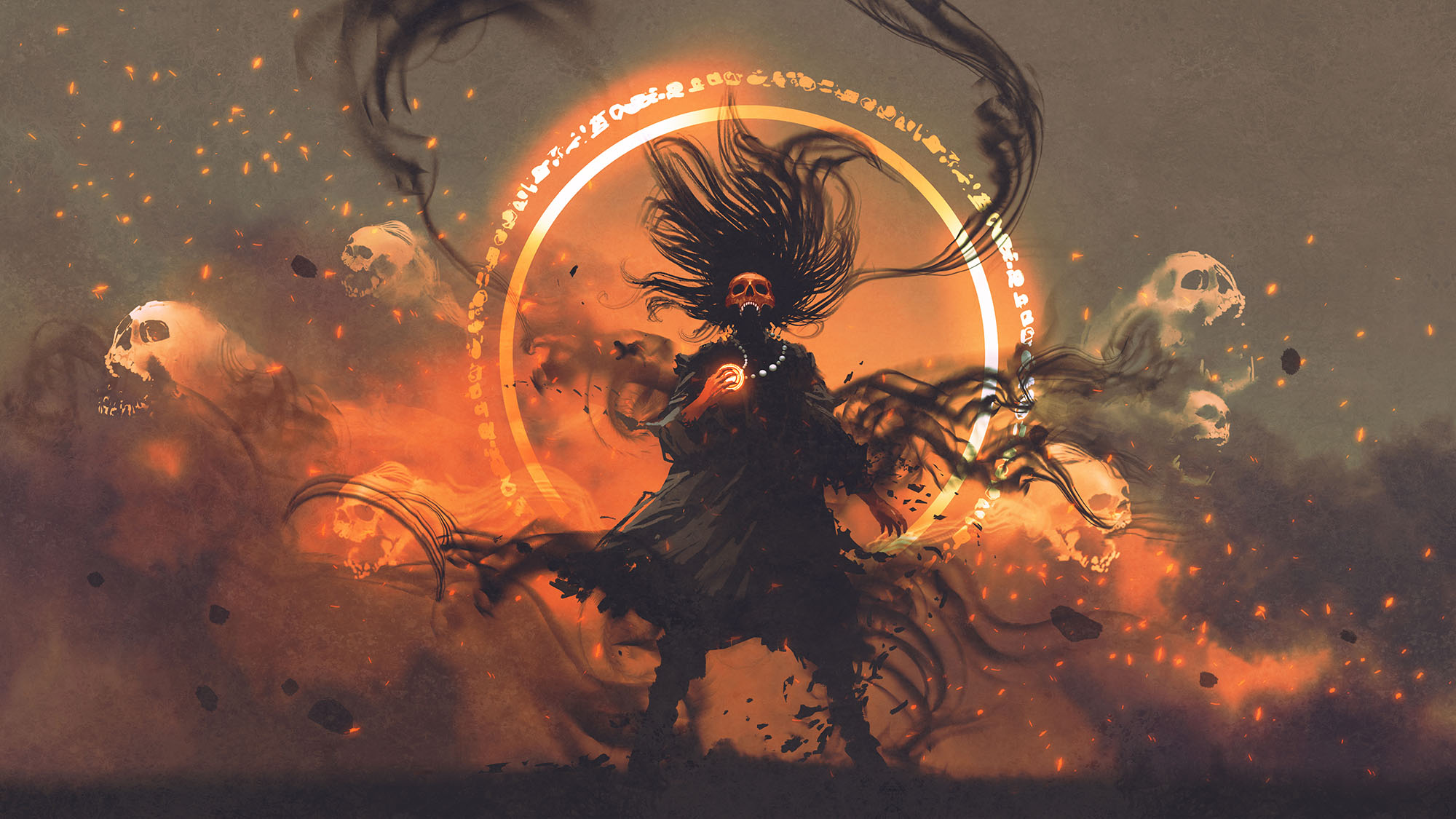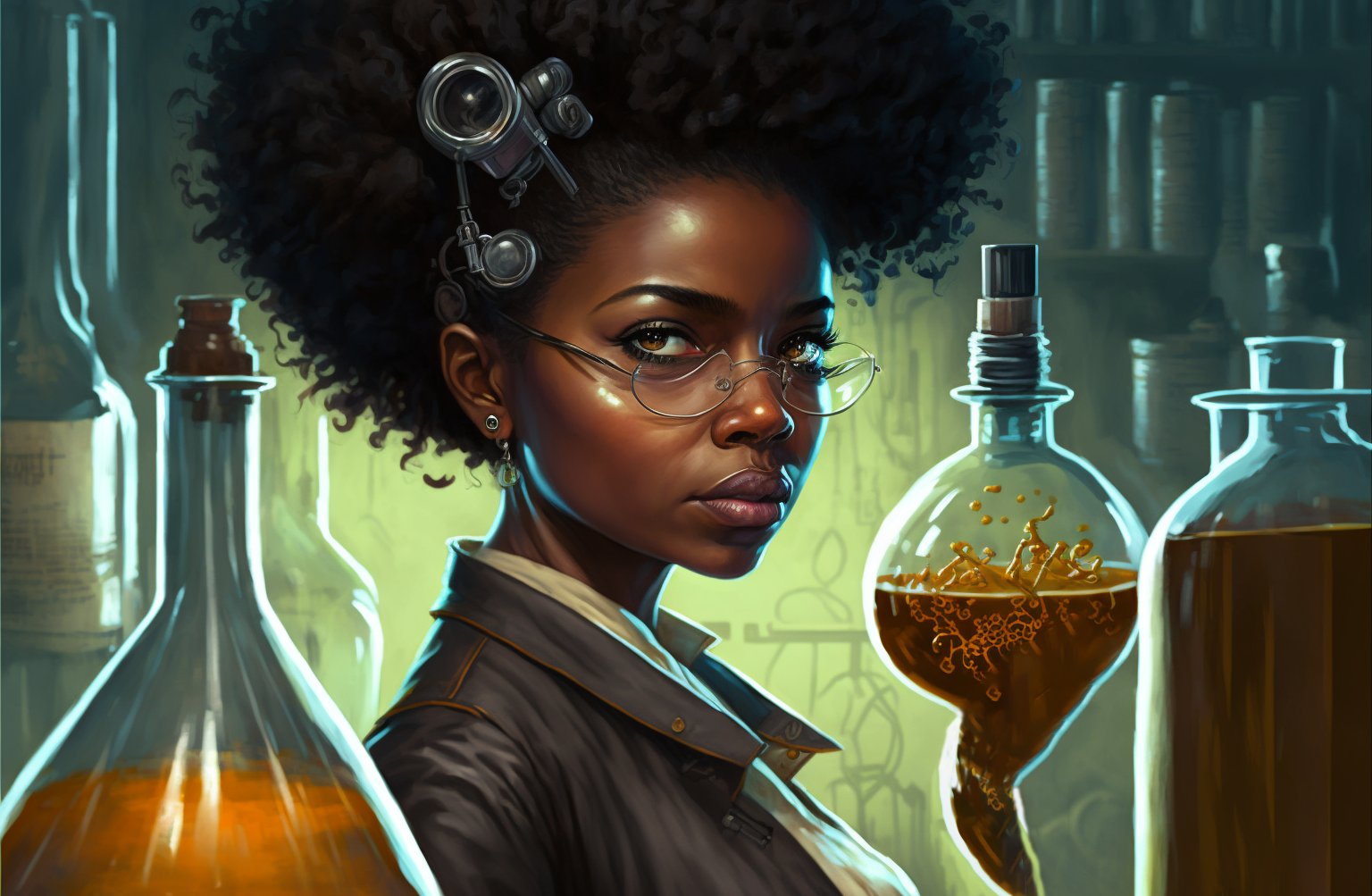
Let’s say that you want to skip over a large chunk of time in your campaign.
Actually, let’s back up for a moment. It’s possible that the idea of skipping time has never occurred to you. Much like dungeon scenarios can condition us to resolve everything one action at a time (much to the detriment of sequences run outside of the dungeon), so, too, can other scenario structures and situations trap us in a pattern of resolving every single day as if they were all of equal importance and focus.
When combined with the XP systems in D&D, for example, this can easily create a hyper-compressed narrative where the PCs are getting out-wrassled by giant rats one day and slaying Zeus a couple weeks later. But even without those kinds of advancement mechanics, getting stuck in a cycle where every day is jam-packed with adventure can be very limiting in the kinds of adventures you run and the scope that your campaigns are capable of.
(Conversely, some campaign structures and concepts can make it completely appropriate to remain laser-focused on the problem at hand. That’s just fine. I’m just pointing out that there are other options.)
It should also be noted that players are often motivated, for any number of reasons (including their own rote habits), to fill every day to the brim with stuff they want to do. So if you want to decompress the campaign a bit, you may need to push back against that impulse and/or incentivize taking realistic breaks from the breakneck action.
For example:
- Leveling up in D&D might require more than just XP. You could introduce a rule that in order to gain a level, PCs must spend a period of time training. (This period could be set to almost anything and you could justify it: A fortnight. One week times the character’s new level. A cycle of the moon. One full season. A year and a day. Whatever.)
- Mysterious dames with suspiciously missing husbands don’t show up on the doorstep of the detective agency every single day. Once the PCs wrap up their current case, there’ll be a fallow period of humdrum work until the next exciting adventure lands on their doorstep.
- The vampires are hunting them and the only way to get the Heat off them is to lay low for a while… maybe a long while.
- Yes, they’re adventure archaeologists: But now that the Spear of Destiny has vanished into vaults beneath the British Museum, there’s a lot of research to be done before they can identify their next expedition. And you can’t rush research!
- In Ars Magica, the projects and research performed by the wizards take one or more seasons to complete. The cycle of play, therefore, is broken down into season-long turns, and the wizards can generally only undertake a single adventure during each season as well.
On the flip side, it’s quite possible that the players will, without any kind of structure or prompting, want some downtime for their characters for any number of reasons.
Which ultimately brings us back to: Let’s say that you want to skip over a large chunk of time in your campaign…
SKIPPING TIME
First, determine how much time is passing before the next scenario is triggered (or whatever will signal the end of the skipped time). The amount of time may be obvious given the reason you’re skipping time in the first place, or it might just be an arbitrary decision on your part. (Or maybe you randomly determine it; e.g., 1d6 months.)
Regardless, frame things up by simple stating the period of elapsed time: “Three months pass.”
Next, go around the table and ask each player what their character did during that time. When it gets to your turn, as the GM, you inject event(s) that you want them to react to and/or develop the actions they’ve described.
In practice, the players will build off each other’s actions and the events you provide, weaving an interconnected narrative. You may also find it useful to:
- Play out short roleplaying vignettes.
- Use simple skill checks or similar mechanics to determine specific outcomes.
- Allow the PCs to use other mechanics (like downtime, research, or project mechanics) to advance their interests (or set things up for the next adventure).
But this isn’t strictly necessary. In any case, you want to make sure you don’t get too bogged down. You’re looking for a relatively high level of abstraction possibly coupled to a highlight reel. Don’t get sucked back into day-to-day logistics.
You can do just one pass around the table, but I find it’s often better to split the time up into three chunks. (Or, if you’ve got a certain number of events for them to respond to, an equal number of chunks.) Each additional pass gives the players more opportunities to weave their stories together and develop their own characters.
Your first instinct might be to have all the chunks be of the same length (e.g., we’re skipping three months and we’re doing three passes, so each pass will be one month long), but I often find it more effective to make each chunk progressively longer:
- “One week has passed. What has Charlotte been doing?” (go around the table)
- “Another month has passed. Where are you now?”
- “Now it’s July. What did you spend the last two months doing?”
The advantage of this progressive sequencing is that it allows the players to be fairly precise in their immediate reaction and follow-up to the dramatic events of the most recent scenario, and then slowly transitions them to thinking in the longer term.
You may or may not want to frame the final pass along the lines of, “In December, you all meet again in London. Tell me how you get there and where you meet.” (In other words, prompt the players to pull it all together and position them for the next scenario.)
EPILOGUES
The Eternal Lies campaign for Trail of Cthulhu by Will Hindmarch, Jeff Tidball, and Jeremy Keller uses a similar technique to provide a satisfying epilogue to the campaign.
If you’re wrapping up a dedicated campaign, it’s likely something that you’ve spent weeks, months, or even years playing these characters. A big, satisfying conclusion to the campaign is great (and a topic for another time), but even after the conclusion, you want to give space for loose threads to be wrapped up and for the players to say goodbye to their beloved characters.
There are many ways to handle this, but one powerful and flexible method is to cue up a time skip… just without returning to game play on the other side.
- Where are you one week after the campaign ended?
- One month after the campaign ended?
- One year after the campaign ended?
The exact periods of time you choose for each pass will depend on any number of factors — the characters, the nature of the campaign, whether you’re planning to run another campaign in the same setting, how big the fallout from the campaign’s conclusion is likely to be, etc.
This technique can be particularly cool in historical campaigns, because you can relate the time skips to the passage of real world events. For example, if you were running a Fall of Delta Green campaign in the ‘60s, you could skip forward all the way to 2023 and discover where the characters would be today.
In some cases, you might want to drive all the way forward to the characters’ deaths. But that usually won’t be the case: To live is an awfully big adventure, and there are many forms of closure far more satisfying than the Grim Reaper’s icy grip.
ADVANCED EPILOGUES
As you’re prepping to run your epilogue (whether using the skipped time method or not), you should look back at the totality of the campaign and think about:
Unfinished Threads. It would be great if every single loose thread in a campaign was neatly tied off, but that’s usually not what happens. Real life can be messy, and so can the lives of our characters. Particularly in the big drive to the campaign finale, it’s likely stuff will get left unresolved.
For example, in my Dragon Heist campaign, one of the characters had a driving motivation to figure out what had happened to her mother. For one reason and another, however, it had never been prioritized during the campaign. (Neither by me, her player, nor the character herself.) This made it a perfect target for the epilogue.
Themes. What were the major themes of the campaign? These may have been planned. They may have emerged through play. (Quite probably both.) Either way, try to pull these themes into the epilogue. In some cases, themes may even have a resolution.
Characters. What members of the supporting cast were particularly memorable or important? Make sure to pull these characters into the epilogue and give them a sense of closure, too.
This will likely include mostly allies, but it’s not unusual for an enemy or two to still be hanging about. What happens to them? What’s their legacy?
Rewards & Consequences. The PCs fought hard to achieve things. (Or maybe they strived and failed.) Along the way, there were probably prices that had to be paid. Cementing those costs and payoffs and consequences in the epilogue is a way to invest the events of the campaign with even greater meaning.
It’s one thing to save a village. It’s another to see all the children growing up who would never have lived if you hadn’t.















